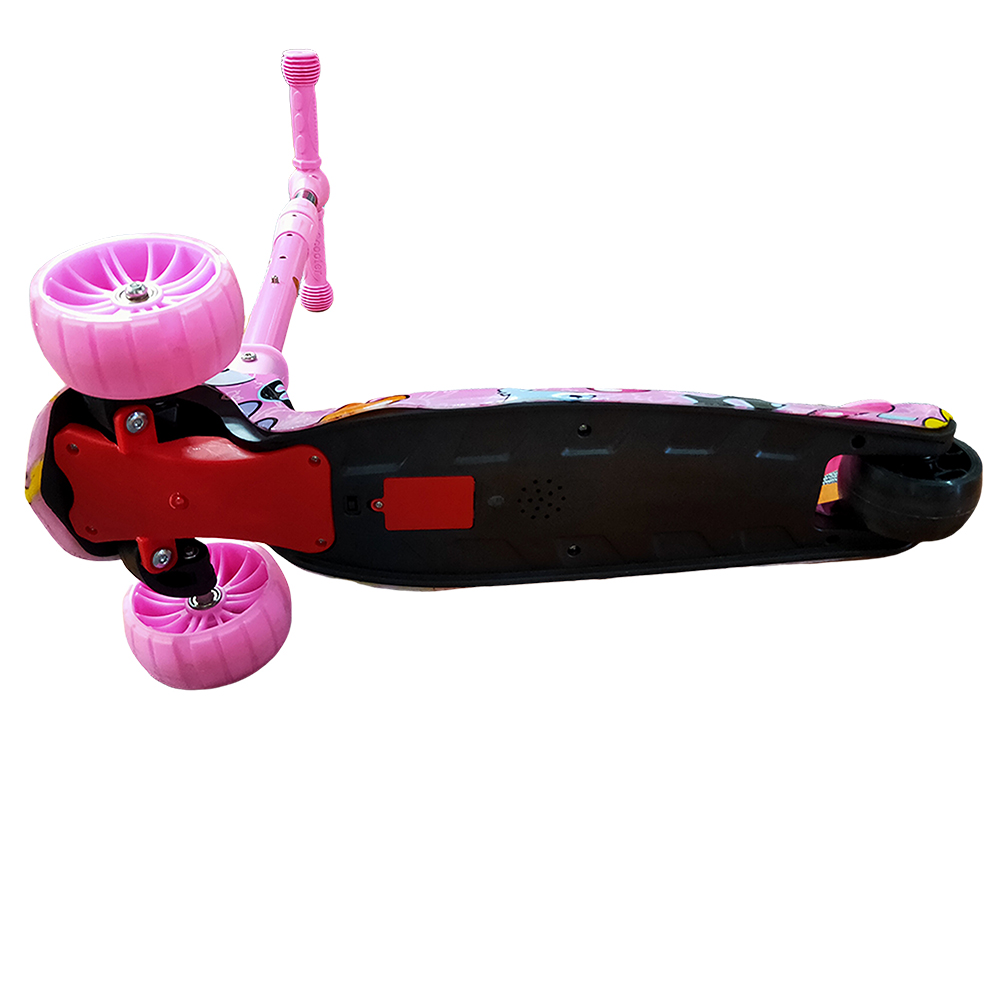The Weight of a Kids’ Scooter What You Need to Know
When it comes to selecting the right scooter for your child, one of the first things to consider is its weight. But why is the scooter's weight so important? In this article, we will delve into how much a kids’ scooter typically weighs, and why understanding weight is crucial for both safety and enjoyment.
Typical Weight Range
Generally, the weight of a kids' scooter can vary significantly depending on its type, materials, and design features
. Most scooters designed for children typically weigh between 3 to 8 pounds (approximately 1.4 to 3.6 kg).- Lightweight Scooters At the lower end of that spectrum, lightweight scooters often weigh around 3 to 5 pounds (1.4 to 2.3 kg). These models are generally made from materials like aluminum, which is strong yet light, making them easier for younger children to handle. Lightweight scooters are ideal for very young kids, as they can easily push, pull, and maneuver them.
- Standard Weight Scooters Scooters in the 5 to 7-pound range usually feature a more robust design and come with additional components such as larger wheels or a sturdier frame. These scooters may be better suited for older children who can handle a little extra weight and require durability for more adventurous rides.
- Heavier Models Some scooters that are designed for older or more experienced riders can weigh 8 pounds or more. These models often include advanced features such as heavier-duty wheels, suspension systems, or multi-functional designs that make them suitable for tricks and stunts.
Importance of Weight
lehuo how much does a kids scooter weigh

1. Ease of Handling The weight of the scooter plays a crucial role in how easily your child can maneuver it. A heavier scooter can be challenging for younger kids to control, especially if they fall or need to lift their scooter over obstacles. Lightweight options are generally preferred for younger or less experienced riders, as they are easier to handle in various situations.
2. Portability If you plan to bring your child's scooter along on outings or trips, weight becomes a significant consideration. Lightweight scooters are easier to carry, making them more convenient for parents or guardians. If storage is a concern, consider how easily the scooter can be transported when not in use.
3. Durability vs. Weight While lightweight scooters are easy to manage, it’s essential to balance this with durability. A scooter that is too light may not withstand rough play or outdoor conditions, leading to quicker wear and tear. Conversely, while a heavier scooter may offer more stability, it can become cumbersome for kids to use. Finding a model that offers both lightweight construction and durability is key.
4. Safety Ideally, the weight of the scooter should support your child’s development and riding style. A scooter that is appropriate for their size and strength allows them to ride safely without overexerting themselves or struggling to control the scooter.
Choosing the Right Scooter
When selecting a scooter for your child, consider their age, size, and riding experience. Conduct thorough research on different models to find one that balances weight, durability, and functionality. It may be helpful to involve your child in the selection process to ensure they are comfortable with their new ride.
Ultimately, understanding the weight of a kids’ scooter can significantly enhance your child’s riding experience and safety. A scooter that is adequately tuned to their abilities can foster confidence, improve coordination, and encourage outdoor play. With the right choice, your child can steer their way to many fun adventures on two wheels.
-

 Scoot&RideKids Child Kick Push Scooter 3 Wheels with LED Flashing Tilt Lean Boys Girls Scooter
Scoot&RideKids Child Kick Push Scooter 3 Wheels with LED Flashing Tilt Lean Boys Girls Scooter




- 4
$33.17 -

 Scoot&RideKids Scooter Child Kick Flashing LED Light Up 3 Wheel Push Adjustable Folding 3
Scoot&RideKids Scooter Child Kick Flashing LED Light Up 3 Wheel Push Adjustable Folding 3- 0
$25.52 -

 Scoot&RideKids Scooter Child Kick Flashing LED Light Up 3 Wheel Push Adjustable Folding 2
Scoot&RideKids Scooter Child Kick Flashing LED Light Up 3 Wheel Push Adjustable Folding 2- 0
$33.17 -

 Scoot&RideKids Scooter Teens Foldable Kick Push Scooter Adjustable Height Safe 2 Wheels
Scoot&RideKids Scooter Teens Foldable Kick Push Scooter Adjustable Height Safe 2 Wheels




- 4
$49.99
Meet our partners and discover what powers their creativity!
When you register for a Lohas scooter, you will receive a 10% discount on your first order and can be notified of sales, new product launches and other offers in advance.









